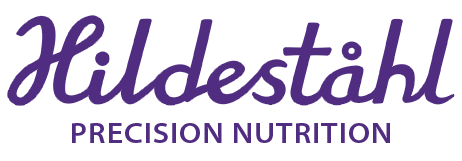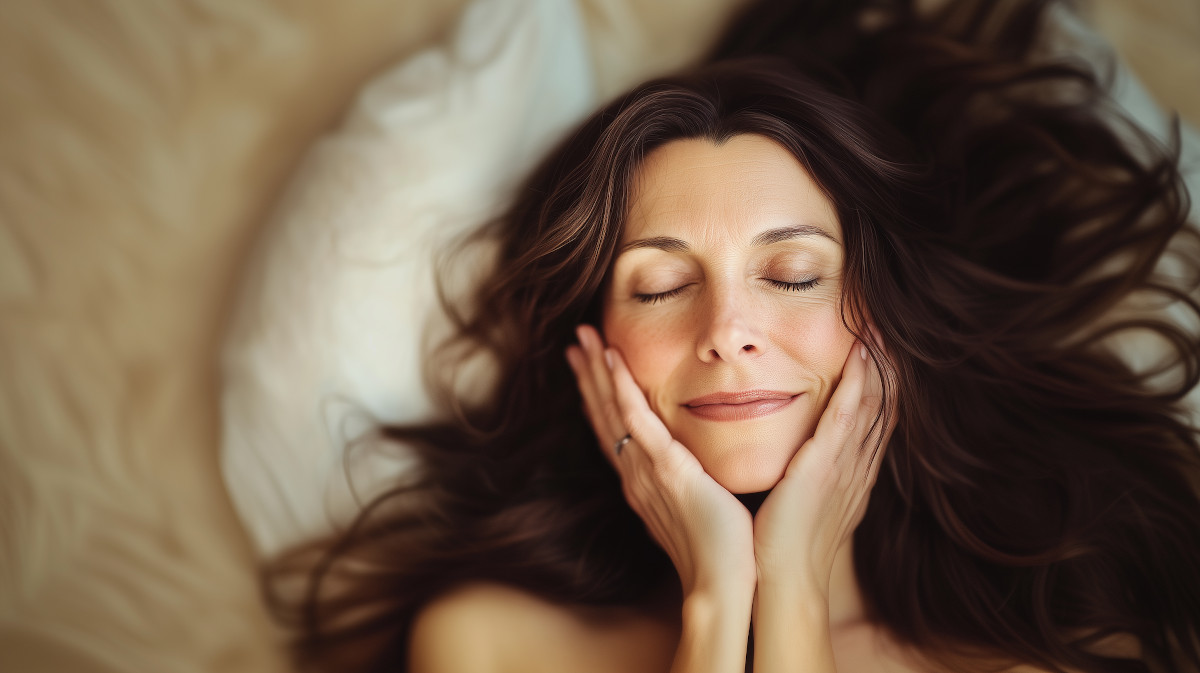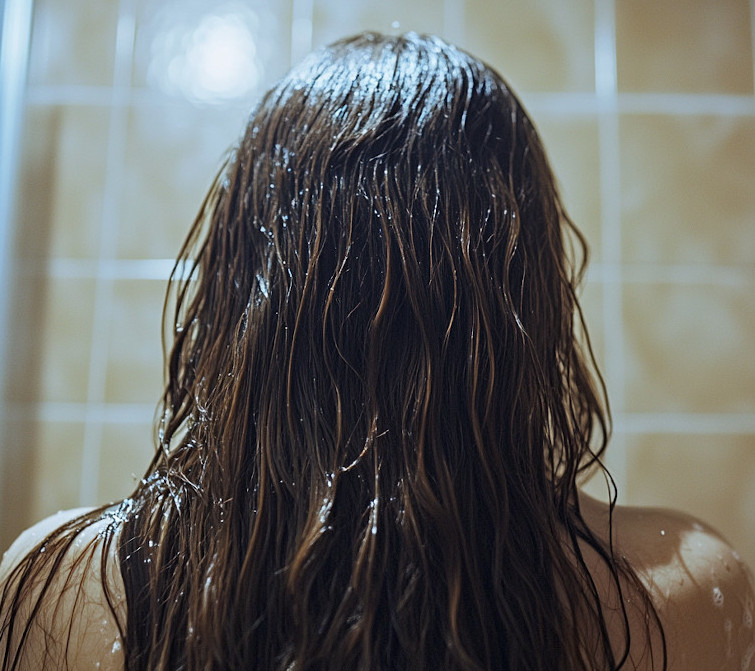No products in the cart.
Hair tips
Article authored by Frida Olsson
Hair tips: Get healthier, longer and thicker hair (your all-in-one guide)
This guide is your map to healthier hair and contains tips that actually make a difference. From nutrition and routines to products and techniques, we’ll help you build a sustainable and effective hair care routine. All the hair tips you need, plain and simple. And yes, it may feel like a lot to take in, but don’t stress. Start small, pick one or two things to implement and let the rest come with time. Your hair deserves love, and that journey starts here. You don’t even have to go through all of this now – bookmark this page and come back later if you feel more comfortable.
More than just products – hair health starts on the inside
The truth is that hair is like a mirror of your inner health. It doesn’t matter if you bathe in the most luxurious hair masks and apply the finest oils – if your body isn’t feeling well, your hair will show it. Nutrition, water and restoration are key when it comes to both your and your hair’s well-being. So let’s start with the basics: what you put in your body.
Eat your way to your dream hair, hair tip number one
Hair is built from keratin, a protein, and to build it you need the right nutrition. Here’s what you should consider…

Essential nutrients for hair
1. protein – the building blocks of hair:
– What is it? Protein is what hair is made of. It’s simple.
– Eat: Eggs, chicken, fish, tofu, beans, lentils, nuts.
– Tip: Include protein at every meal.
2. Iron – for oxygenation of hair follicles:
– Why? Iron helps red blood cells transport oxygen to hair follicles.
–Eat: Spinach, beets, meat, legumes, quinoa.
–Tip: Combine iron with vitamin C (e.g. lemon, kale or paprika) for better absorption.
3. Omega-3 – for shine and strength:
– Why? Moisturizes the scalp and strengthens hair follicles.
–Eat: Salmon, sardines, chia seeds, flax seeds.
–Tip: If you don’t eat fish, go for an omega-3 supplement.
4. Vitamins for the hair
– Vitamin A: Stimulates sebum production. Found in sweet potatoes, carrots, spinach.
– Biotin (Vitamin B7): Strengthens hair. Found in eggs, avocados, almonds.
– Vitamin C: An antioxidant that protects hair follicles. Strawberries and citrus fruits are good sources.
– Vitamin D: Promotes hair follicle activity. Catch some sun or eat oily fish.
– Vitamin E: Improves blood circulation in the scalp. You can find it in almonds and sunflower seeds, among others.
A tip for nuts: soak them the day before you eat them to reduce their antinutrients and your body will absorb more of the nutrients! Adding a teaspoon of salt per liter of water will help break down the antinutrients even more effectively.
Tips for a sustainable nutritional intake
Of course, the best way to get all this is through diet, but it’s easy to feel overwhelmed and under a lot of pressure when it comes to planning your food. A good food supplement can be a lifesaver. Hairforce is the most advanced formula on the market, packed with everything your hair needs and more – plus it gives your skin and nails a glow! Check out Hairforce here.
Don’t forget water and sleep
It’s easy to forget, but drinking enough water is one of the easiest things you can do for your hair. Strands need moisture to keep them from becoming dry and brittle, so aim to drink at least 2 liters of water a day. A hair tip you may not hear very often – it’s also important that the water is clean and doesn’t contain any harmful substances that, believe it or not, our tap water has in it. Luckily, there is a really effective and good water filter that is both economical and easy to mount directly on your kitchen faucet, take a look at it here.
And yes, sleep is equally important! Sleeping gives your body time to repair and recover, and that includes hair growth. Aim for 7-9 hours a night and use a silk pillowcase – it will reduce friction on your hair and reduce wear and tear.

Stress less and move more – a hair tip that not only benefits your hair
Stress can be a real culprit when it comes to hair health. When you’re stressed, your body produces more of the hormone cortisol, which can cause hair loss. Try to reduce stress with yoga, meditation or just walking in nature.
Then there’s exercise, which is just as important. Exercise improves blood circulation, giving the scalp and hair follicles a much-needed boost. It is often said that 30 minutes of exercise (of moderate intensity) a day contributes to good blood circulation, and if you’re like me and find it hard to get your head around physical activity, I can tell you that everyday exercise, like walking, also counts. So if you want to improve your circulation without going to the gym, just get off the bus a few stops early and walk the rest of the way to work or park a few blocks away.
Washing your hair right – simple hair tips to apply
Washing our hair is something we do regularly, but many of us do it in a way that can actually damage our hair.
Avoid hot water
Hot water opens the cuticle, which can cause moisture and nutrients to be lost from the hair. The result? Dry, frizzy hair that breaks more easily. For colored hair, hot water can also cause the color to fade faster.
Solution: Wash your hair with lukewarm water to cleanse, and always finish with a cold water rinse (not ice cold – it should be comfortable. Around 15-20 degrees is ideal). The cold rinse closes the cuticle layer of the hair and gives the hair a smoother, shinier finish.
How often should you wash your hair?
Washing your hair too often can upset the natural balance of your scalp and lead to overproduction of sebum, which makes your hair look greasy faster. Two to three times a week is ideal for most people. If you exercise and sweat a lot, you can rinse your hair with clean water between washes. Use a natural aloe vera or rose water spray on your scalp after rinsing to restore the pH balance (frequent contact with water can disrupt the natural state of your scalp, which you will regain when you reduce the number of shampoo washes).
When you use shampoo and conditioner
Use the right products: Choose a mild, sulfate-free shampoo that cleanses gently without drying out your hair (more on this below).
Apply shampoo correctly: Gently massage the scalp to cleanse, but avoid rubbing the lengths. Rinse out the shampoo thoroughly, preferably a little longer than you think is needed.
Conditioner: Apply conditioner only to the lengths and ends – not to the scalp. Let it sit for a few minutes before rinsing.
Gentle handling of wet hair
When hair is wet, it is extra fragile and it is very important that we handle it carefully.
Use a microfiber towel: it absorbs moisture without tearing your hair. Alternatively, you can use an old cotton sweater!
Avoid rubbing your hair: pat it gently and let it air dry.
Do not brush wet hair with your regular brush. Depending on your hair type, you may handle your hair differently when it is wet:
Straight or fine hair: Brush your hair before you wet it. If you still have tangles you need to sort out after the hair is wet, wait until the hair is semi-damp or dry and use a wide-toothed comb.
Curly or wavy hair: It’s usually best to untangle curly hair when it’s wet or damp, otherwise it can become frizzy. Use a wide-toothed comb or fingers to loosen tangles.
Thick or coarse hair: Can be brushed if done gently with a wide-toothed comb or a brush specifically designed for wet hair.
Filtered water is better for your hair
Ordinary water contains chlorine, minerals such as calcium and magnesium (high in hard water) and metals such as copper and iron, which can dry out the hair, cause build-up and negatively affect colored hair. This makes hair dull, brittle and harder to wash clean. A water filter in the shower reduces these substances, leaving hair softer, more moisturized and easier to clean. In addition, the scalp is protected from irritation and hair products work better in filtered water. Getting a water filter for the shower was definitely the best investment I’ve made in the health of my hair – you notice a big difference within a short time.
Brush your hair right and avoid unnecessary wear
Brushing your hair may seem like an obvious and simple thing, but there are actually many ways to do it wrong. If you handle your hair the wrong way when brushing, you risk causing unnecessary wear and tear and damage, so here are some hair tips that can improve your daily hair management.
Start with your fingers and work your way up
Use your fingers to untangle tangles before you take out the brush.
Always brush from the ends and work your way up to avoid tearing your hair.
Adapt brushing to your hair type
Straight and fine hair: Brush morning and evening to spread the hair’s natural oils.
Curly hair: Brush only when hair is damp, using a wide-toothed comb, to preserve curl structure.
Thick or coarse hair: Divide the hair into sections and brush one section at a time.
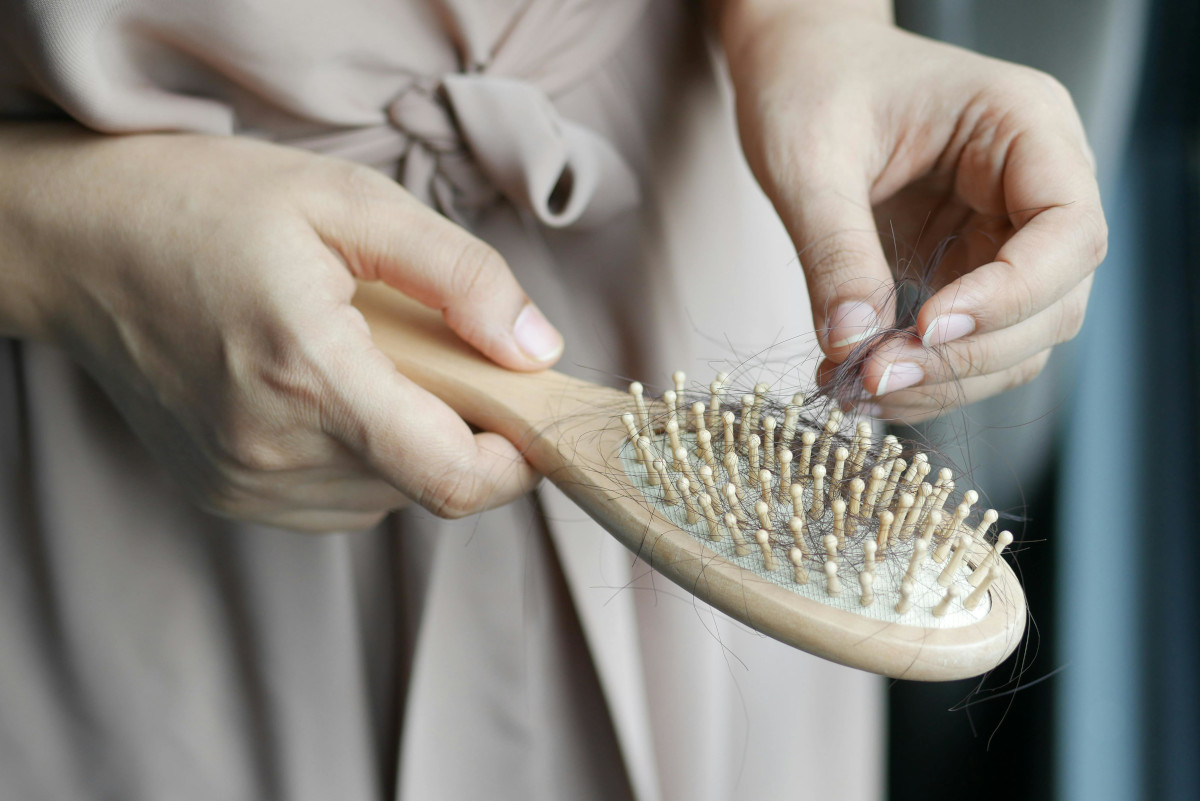
Choose the right brush or comb
Pig hair brush: Perfect for distributing hair’s natural oils and adding shine.
Wooden brush: Reduces friction and static electricity.
Wide-toothed comb: Gentle on wet hair and curls.
The brush you should use depends entirely on your hair type, but the tools mentioned above come in different designs to suit different hair types. Brush only enough to untangle tangles and spread oils. Over-brushing can cause wear and tear, especially on fragile hair.
Products for healthier hair – what to use and avoid
The beauty industry loves to sell us products with long lists of ingredients that we don’t understand. But the truth is that many of these ingredients do more harm than good. This is something I could write a lot about but if you’ve made it this far, I imagine your brain is starting to get a little mushy with information, so I’ll try to be brief. If you find interest in this, I recommend you search further online. There is a lot to explore.

Ingredients to avoid – an essential hair tip
1. Sulphates
–Avoid because: they are strong cleansers that dry out the hair and scalp.
–Look instead for: sulfate-free alternatives like Coco Betaine or Decyl Glucoside.
2. Silicones
–Avoid because: silicones coat the hair shaft and can build up residue that weighs down the hair.
–Instead, look for: natural oils like argan oil or jojoba oil.
3. parabens
–Avoid because: they can disrupt hormone balance.
–Look instead for: products with natural preservatives like vitamin E.
4. drying alcohols
–Avoid because: they dry out your hair.
–Look instead for: fatty alcohols like Cetyl Alcohol, which actually moisturize.
5. Perfume and synthetic fragrances
– Avoid because: they can irritate the scalp.
– Instead, look for: natural fragrances from essential oils. However, if you have never used an essential oil product, you should test the product on a small area first. Some people may be hypersensitive to components such as limonene, linalool and geraniol found in some essential oils (these are declared in the list of ingredients).
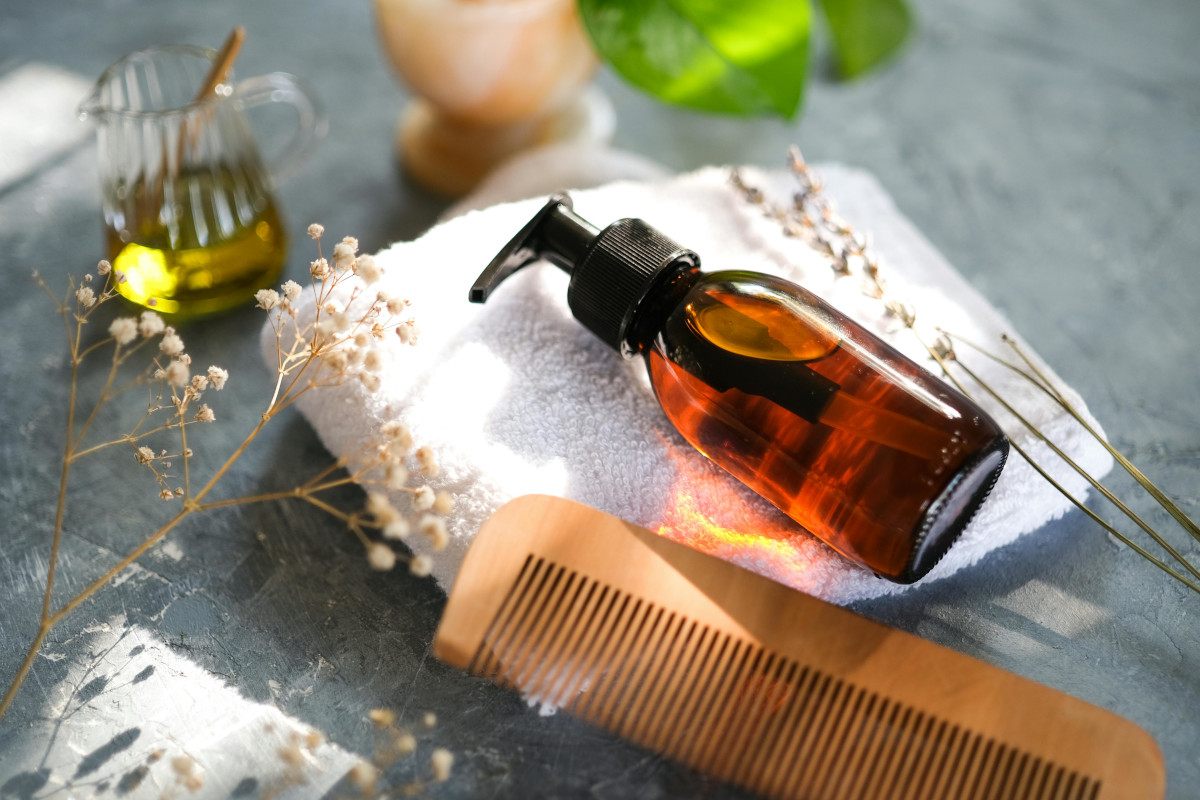
Products to include in your routine
- Moisturizing masks:
Use once a week. For example, try a hair mask with keratin or make a homemade mask with avocado and honey. - Natural oils:
Coconut oil, argan oil or castor oil work great as a wrap. Castor oil is particularly good for promoting hair growth (although it is a very oily oil). Warm the oil before application to increase absorption. - Serum for the scalp:
A serum with ingredients such as caffeine or biotin can stimulate hair follicles. - Dry shampoo:
Perfect for freshening up hair between washes. But use it sparingly and be sure to brush out any residue properly to avoid clogging the scalp. The hog hair brush is perfect for this purpose.
Protect hair from wear and tear
1. sleep right:
Use a silk/ silk scarf to reduce friction.
Braid your hair loosely at night to avoid tangles.
2. protect your hair from heat:
Minimize the use of heat styling tools.
Always use a heat protectant when styling. For example, aloe vera gel can be mixed with water and sprayed on the hair as a light heat protectant.
3. Keep the tops healthy:
Cut the ends every 6-8 weeks to prevent split ends.
Extra routines for the scalp
A healthy scalp is the foundation of healthy hair. By giving your scalp a little extra love with massage and scrubs, you can both stimulate hair growth and keep your scalp balanced. A hair tip you should definitely take to heart.
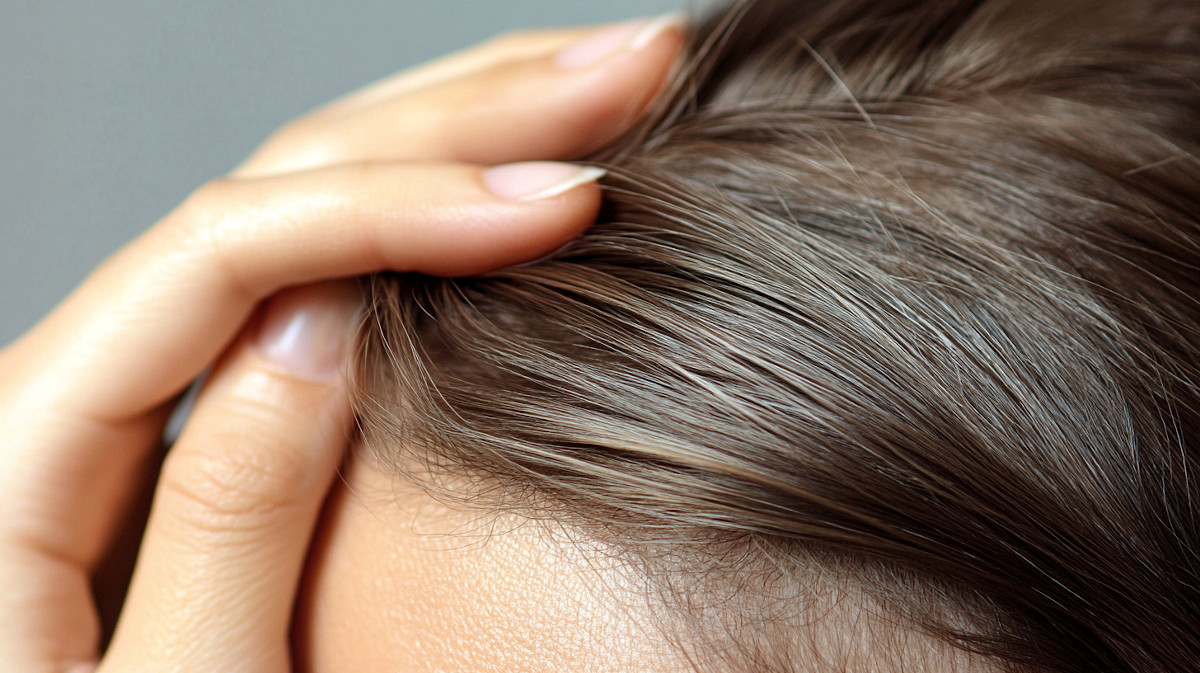
Scalp massage
Massaging the scalp increases blood circulation and stimulates hair follicles, which can promote hair growth. It’s simple and effective!
How often? 2-3 times a week, for 5-10 minutes.
How to do it? Using your fingers or a massage brush, gently massage in circular motions over the entire scalp.
For extra effect: apply a warmed oil, such as coconut or argan oil, during the massage. It moisturizes and nourishes the scalp.

Scalp scrub
A scrub can help remove product residues, dead skin cells and excess sebum, keeping the scalp healthy and hair shiny.
Benefits:
– Removes build-up of styling products and grease.
– Stimulates blood flow and provides a healthier scalp.
– Improves scalp absorption of oils and serums.
How often? Maximum 1 time every 2 weeks or 1 time per month for sensitive scalp.
How to do it?
Use a gentle scrub (homemadeor purchased).
Massage gently with your fingertips – avoid scratching or over-exfoliating.
Rinse thoroughly and finish with your usual routine.
Home-made scrub:
Mix sugar, oatmeal and a few drops of essential oil (like tea tree or lavender) with a splash of water for a simple and effective scrub.
Important to consider
Not too often: Too much massage or scrubbing can stress the scalp and cause irritation.
Listen to your scalp: If you have a sensitive or dry scalp, start gently and use mild products.
Styling – hair tips for more volume without wear
You don’t need heat styling every day, but there are a variety of gentle tricks you can use to create volume and texture. Try one of the following hair tips before you try the hairdryer next time:
Overnight braids: Make loose braids on damp hair before going to bed. In the morning, you’ll wake up with natural waves and extra volume.
Plopping for curly hair: Use a microfiber towel or cotton sweater to let the curls dry upwards, giving fuller results.
Rollers or Velcro coils: Perfect for creating volume. Use them on slightly damp hair and let your hair dry naturally.
Change the side of the leg: Move the leg from its usual place to the opposite side for more volume.
Lift the roots: Use your fingers to lift the roots while your hair dries to give it more volume.
Salt water spray: Adds texture and volume without weighing down the hair.
Aloe vera gel: A natural alternative for lightweight firmness and shine.
Small steps for big results
Hair care doesn’t have to be complicated (although this article may make it sound like that) but it does require some time and love. The trick is not to take on too much so that you get overwhelmed and give up. Start with small changes – pick one or two tips from this guide and build from there. And remember: it’s not the most expensive products that give the best results, but the conscious choices.
Want more tips on how to strengthen and improve your hair? Read our article on supplements for better hair health.
Give your hair a boost
For a simple and straightforward boost that really makes a difference to your hair, take a closer look at Hairforce Professional. Packed with nourishment and powerful ingredients, it’s an easy and sustainable solution for those who want healthy, thick and shiny hair. Especially if you made it through this whole article and you might not really know where to start.
Do something good for yourself and your hair today – make Hairforce part of your routine. Your hair will thank you!
